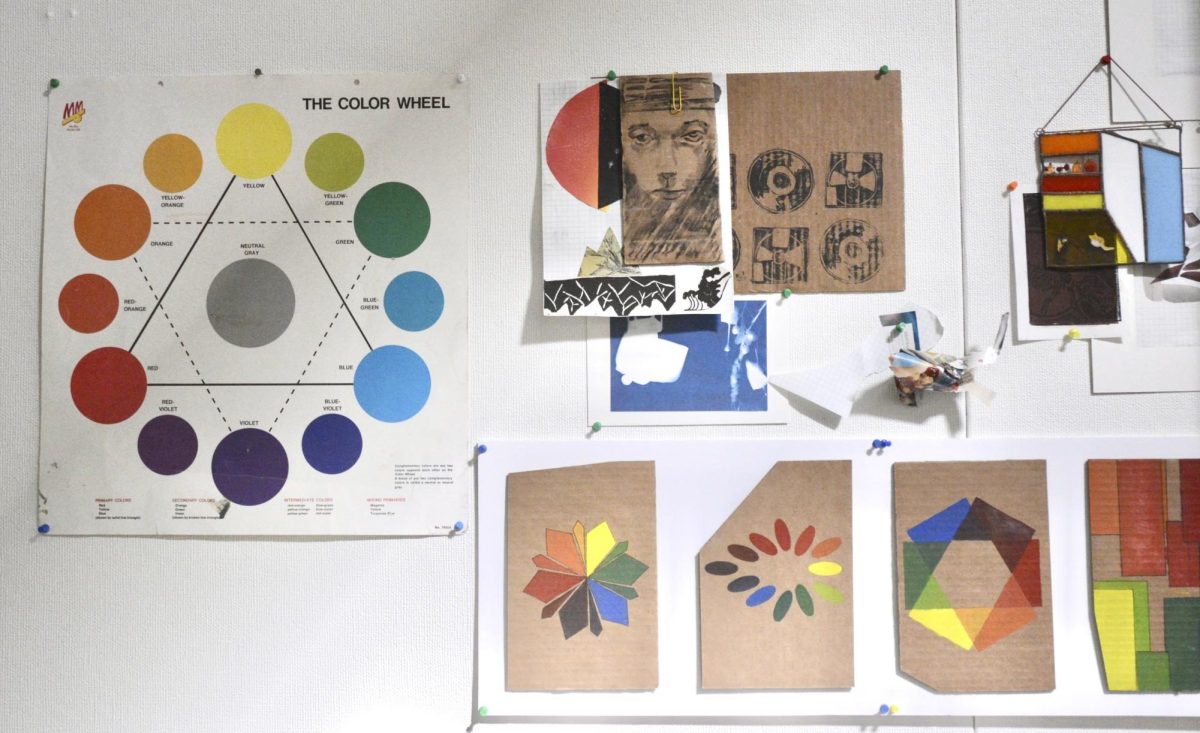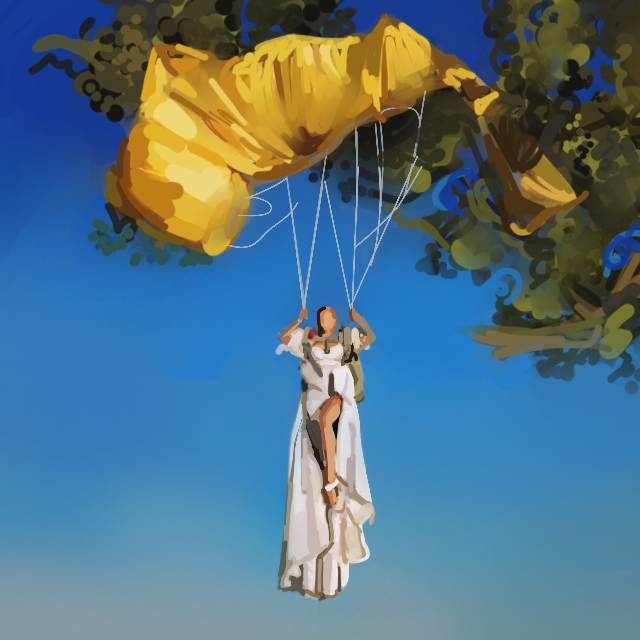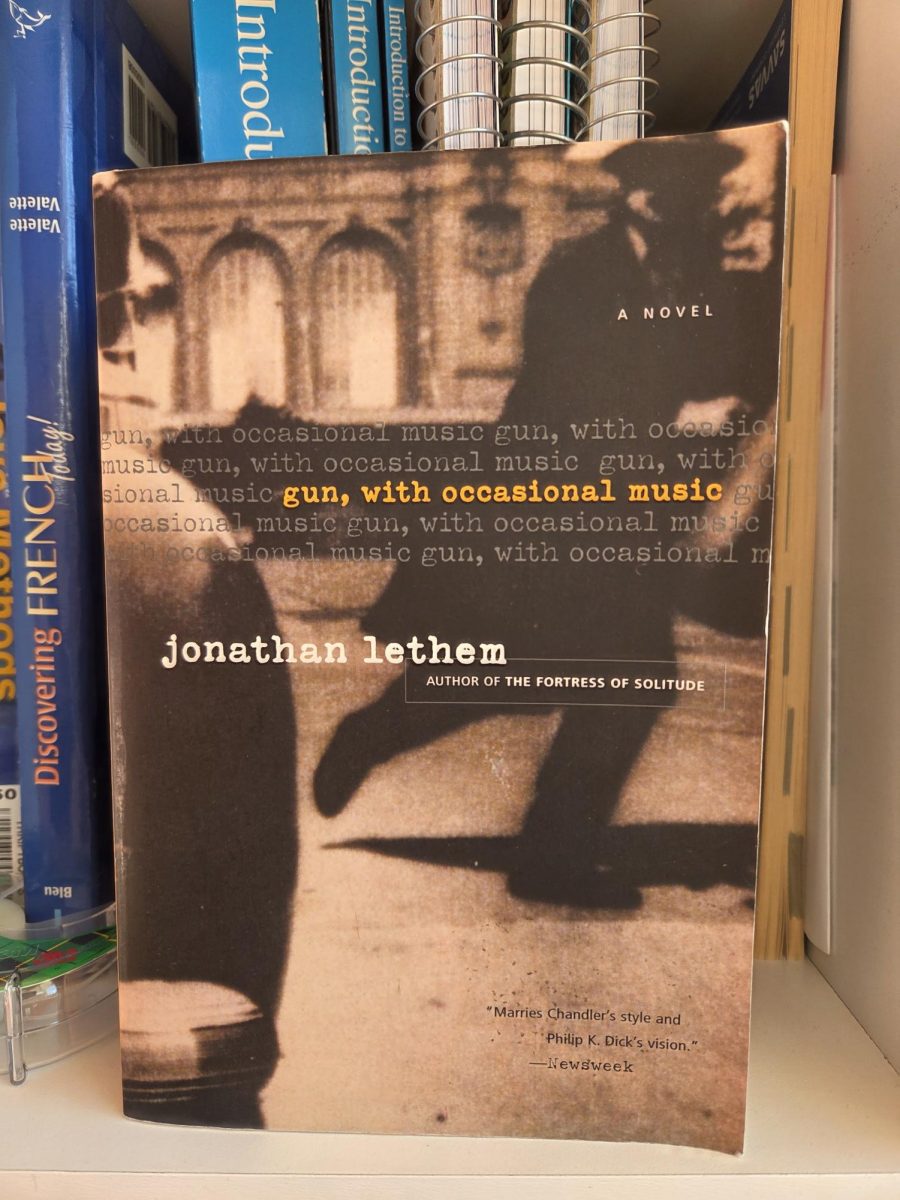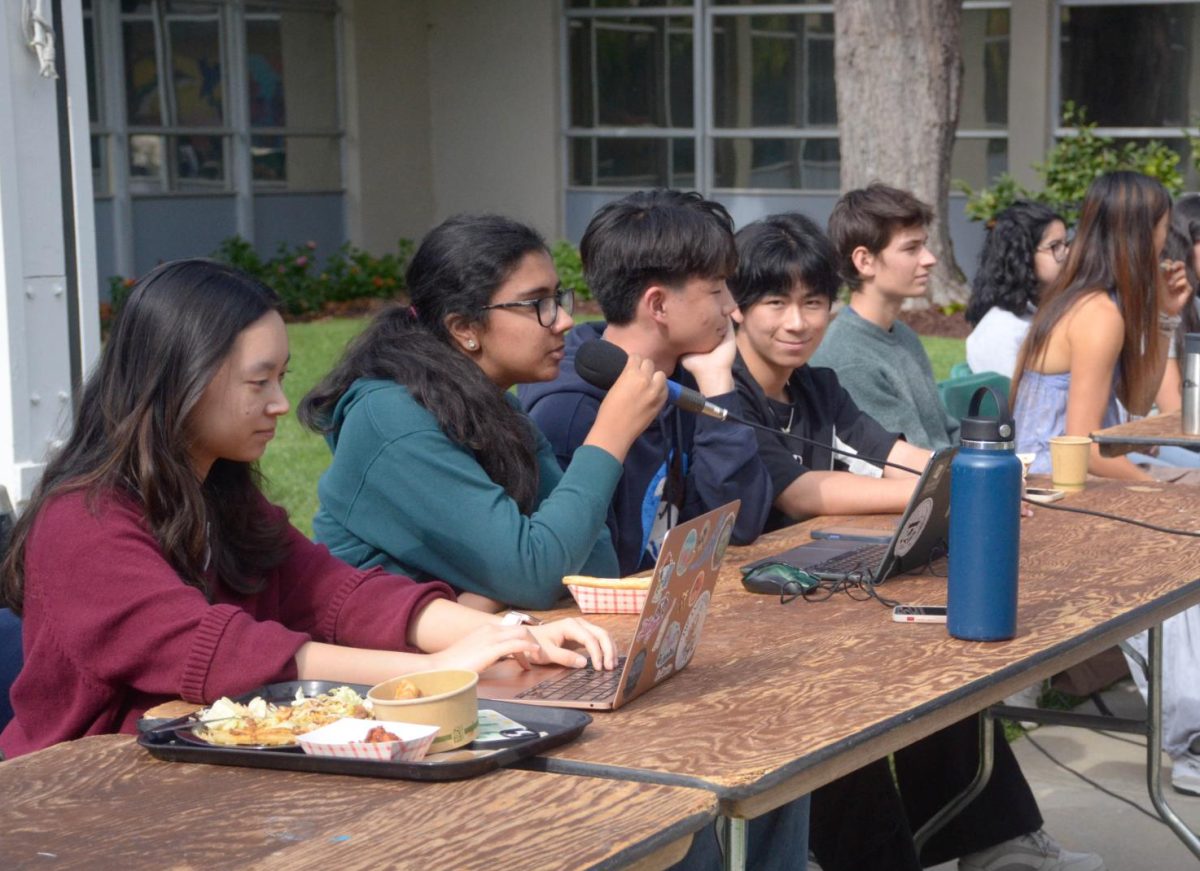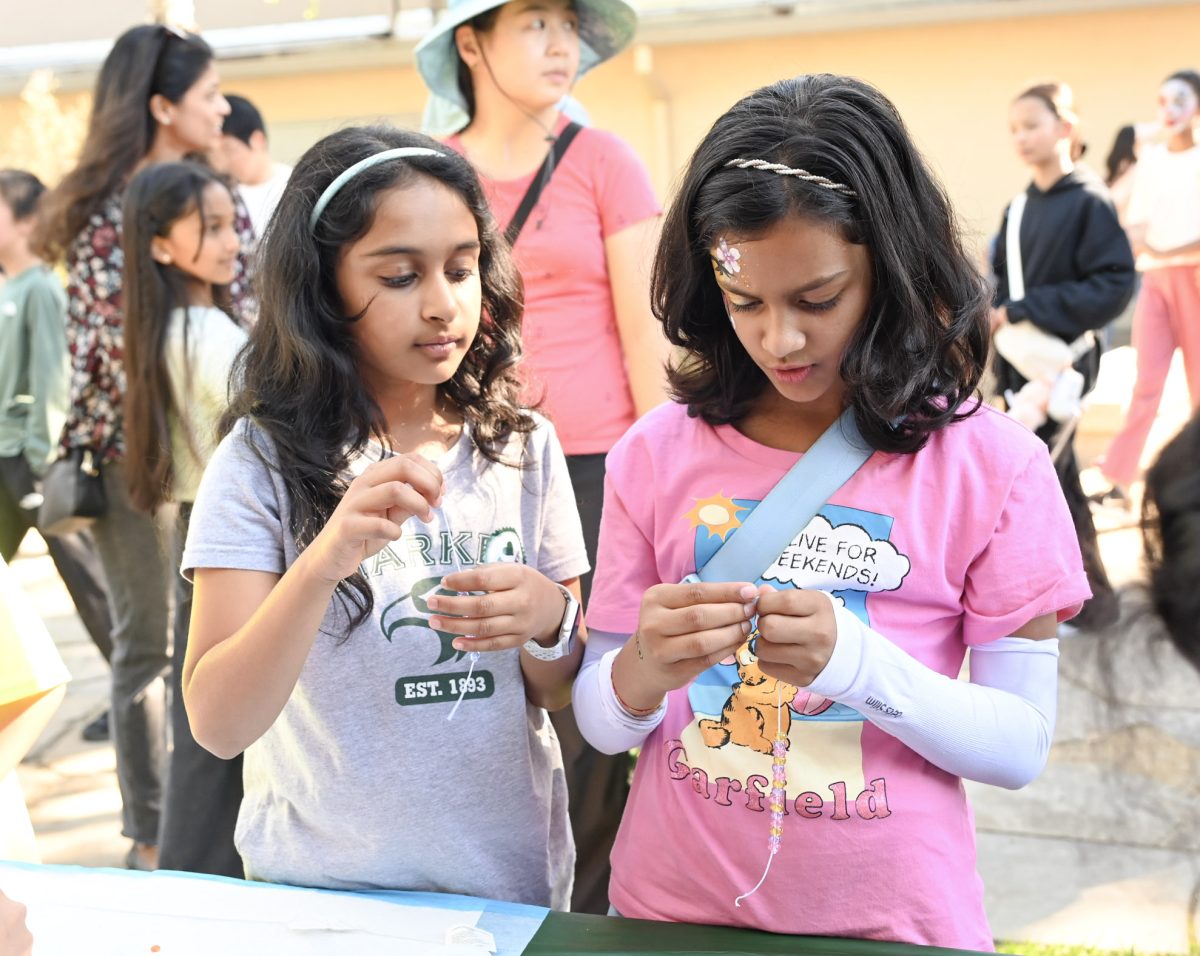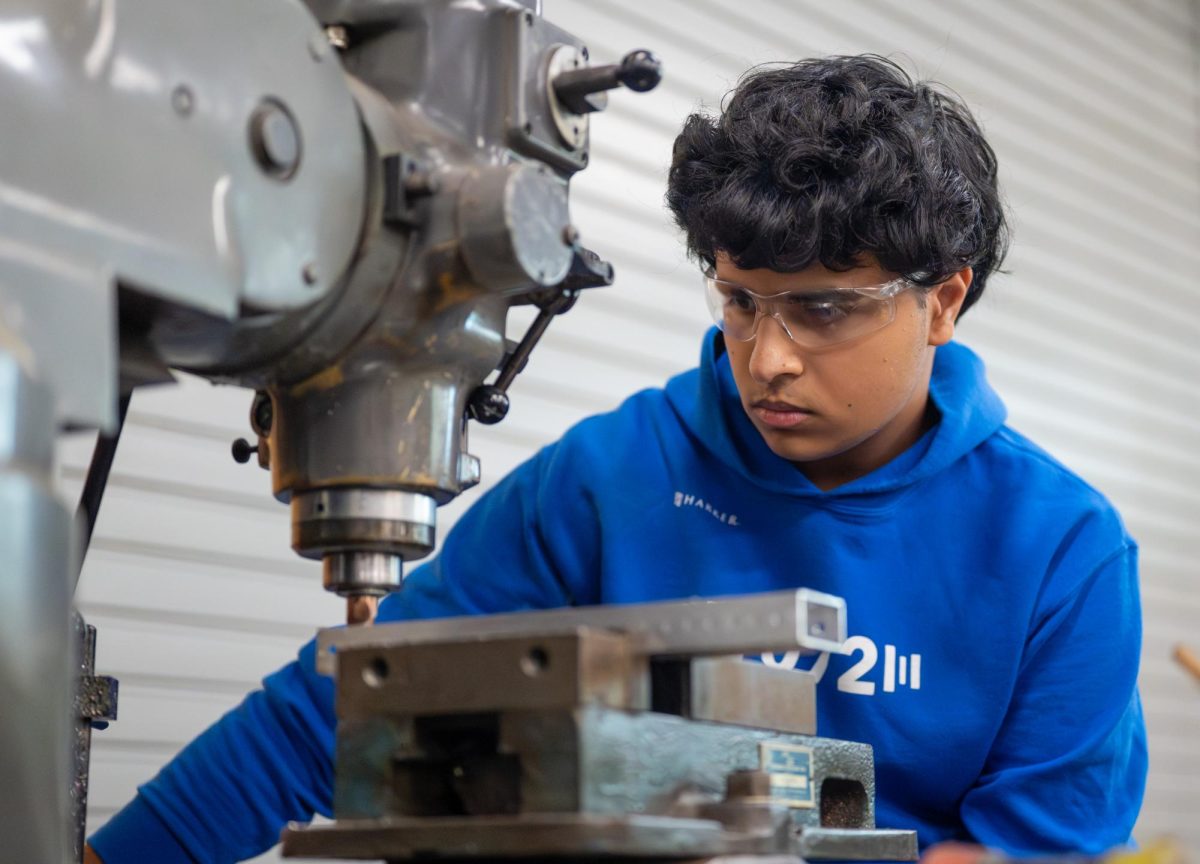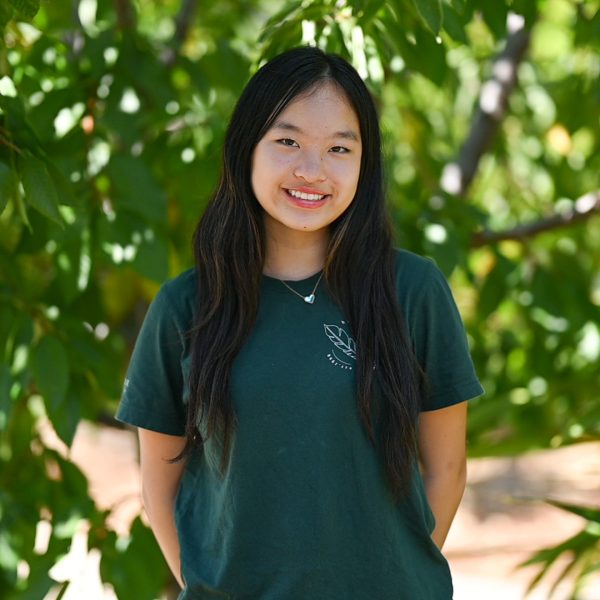Step into the creative sanctuary of the Art Building, where a world of imagination awaits. Vibrant paint bottles stand poised, ready to unleash colorful hues on paper and canvas. Shards of colored glass sparkle beside clay-covered pottery wheels, brimming with endless possibilities of innovation. Welcome to the Study of Visual Arts.
Since the establishment of the upper school in 1998, Harker has incorporated the Study of Visual Arts class into its curriculum. Back then, only sophomores could take the elective, which incorporated in-depth writing and analysis. Frosh learned computer science and engineering basics in the Introduction to Technology class instead. Since students were already exposed to computer science aspects in middle school, administration decided to replace Introduction to Technology with Study of Visual Arts for frosh.
Today, upper school visual arts teachers Pilar Aguero-Esparza and Brian Caponi teach the course. Aguero-Esparza says that the elective has evolved since she joined the upper school in 2005, and she appreciates its impact on Harker’s artistic community.
“[Bringing the elective into frosh year] was a nice move because it allows students who are interested in art to take an art elective throughout the next three years,” Aguero-Esparza said. “[The Study of Visual Arts] is a really wonderful class [where] people [can] get experience and exposure to expression in all the art fields that we offer.”
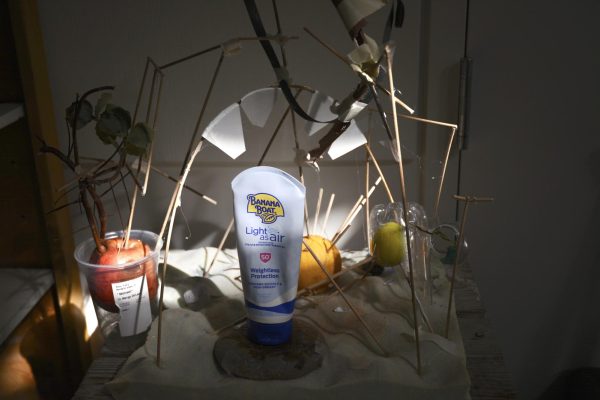
Over time, the course curriculum changed and opened to frosh, pivoting to introduce global art forms. Through hands-on projects including Egyptian paper-making, Greek pottery, Japanese block printing and Western stained glass, students now experiment with various mediums and materials.
“[Study of Visual Arts] is an introduction into visual culture, mainly through the lens of a range of different historical genres,” Caponi said. “I don’t think a lot of students have had the chance to explore mediums like stained glass, which makes this class pretty cool.”
Every project includes specific requirements from students, such as capturing their own memories, drawing inspiration from elements in nature or exploring historical artifacts that hold significance. By incorporating these personal connections into their artwork, students can create more meaningful compositions. Study of Visual Arts student Joyce Zhang (9), whose love for drawing began at 3 years old, says she enjoys the freedom of expression in the class.
“We’ve mostly been doing color and elements of design, and now we are doing prehistoric cave art,” Joyce said. “We are incorporating elements of our personality [into the project]. It’s supposed to be about our childhood and our culture, so I am adding these Chinese moon cake designs and a volleyball, because I play volleyball.”
Disha Gupta (10), who took Study of Visual Arts last year, particularly enjoyed the ancient Greek pottery project. Students carved designs based on daily Harker life on clay pots, such as flowers and campus architecture.
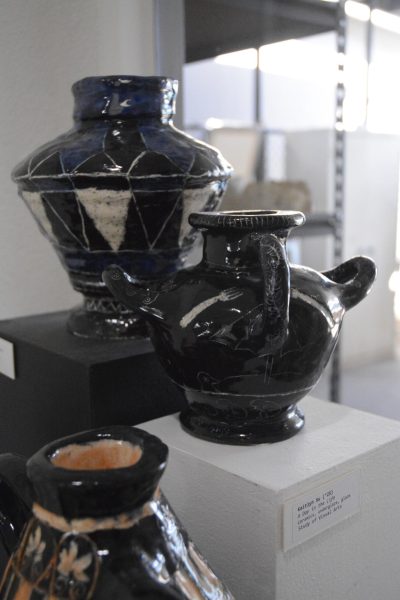
“I really enjoyed being able to integrate nature into our project,” Disha said. “[Making the pot] has helped me view the world around me with more of an artistic lens which I wasn’t able to do previously, and it’s something that I [find] myself applying a lot in my life.”
Even for those who may not enjoy creative pursuits now, the elective holds the potential to reshape their perspective on art. The elective ignited Laurel Davies’ (12) passion for art her frosh year. After studying ceramics in 10th grade and Advanced Placement (AP) 2D Wet Media in 11th, she now takes Graphic Design.
“Given that Harker is such a STEM-oriented campus, I think it’s super important to take some kind of creative class to push your boundaries,” Laurel said. “A lot of students find that when they take Study of Visual Arts, they actually have greater artistic talent than they might have thought. For me, the Study of Visual Arts class really helped me decide to pursue an art career at Harker.”
Now, Aguero-Esparza and Caponi are working to cover art outside the Western world, such as Asian, South American and Latin American art. After completing the course, students can take art-related courses for the next three years, such as ceramics, 2D art, digital art, and AP portfolio classes. Regardless of where a student’s artistic journey goes after completing Study of Visual Arts, they will have gained the ability to apply an artistic perspective to other subjects.
“The course content is really just geared around allowing [students] to work through different visual processes to understand [themselves] a little bit more,” Caponi said. “I hope students are walking away with a greater sense of themselves, and a joy of making and thinking through the creative process. Those skills are really indispensable, and they’re transferable to any field.”


















![“[Building nerf blasters] became this outlet of creativity for me that hasn't been matched by anything else. The process [of] making a build complete to your desire is such a painstakingly difficult process, but I've had to learn from [the skills needed from] soldering to proper painting. There's so many different options for everything, if you think about it, it exists. The best part is [that] if it doesn't exist, you can build it yourself," Ishaan Parate said.](https://harkeraquila.com/wp-content/uploads/2022/08/DSC_8149-900x604.jpg)




![“When I came into high school, I was ready to be a follower. But DECA was a game changer for me. It helped me overcome my fear of public speaking, and it's played such a major role in who I've become today. To be able to successfully lead a chapter of 150 students, an officer team and be one of the upperclassmen I once really admired is something I'm [really] proud of,” Anvitha Tummala ('21) said.](https://harkeraquila.com/wp-content/uploads/2021/07/Screen-Shot-2021-07-25-at-9.50.05-AM-900x594.png)







![“I think getting up in the morning and having a sense of purpose [is exciting]. I think without a certain amount of drive, life is kind of obsolete and mundane, and I think having that every single day is what makes each day unique and kind of makes life exciting,” Neymika Jain (12) said.](https://harkeraquila.com/wp-content/uploads/2017/06/Screen-Shot-2017-06-03-at-4.54.16-PM.png)








![“My slogan is ‘slow feet, don’t eat, and I’m hungry.’ You need to run fast to get where you are–you aren't going to get those championships if you aren't fast,” Angel Cervantes (12) said. “I want to do well in school on my tests and in track and win championships for my team. I live by that, [and] I can do that anywhere: in the classroom or on the field.”](https://harkeraquila.com/wp-content/uploads/2018/06/DSC5146-900x601.jpg)
![“[Volleyball has] taught me how to fall correctly, and another thing it taught is that you don’t have to be the best at something to be good at it. If you just hit the ball in a smart way, then it still scores points and you’re good at it. You could be a background player and still make a much bigger impact on the team than you would think,” Anya Gert (’20) said.](https://harkeraquila.com/wp-content/uploads/2020/06/AnnaGert_JinTuan_HoHPhotoEdited-600x900.jpeg)

![“I'm not nearly there yet, but [my confidence has] definitely been getting better since I was pretty shy and timid coming into Harker my freshman year. I know that there's a lot of people that are really confident in what they do, and I really admire them. Everyone's so driven and that has really pushed me to kind of try to find my own place in high school and be more confident,” Alyssa Huang (’20) said.](https://harkeraquila.com/wp-content/uploads/2020/06/AlyssaHuang_EmilyChen_HoHPhoto-900x749.jpeg)



